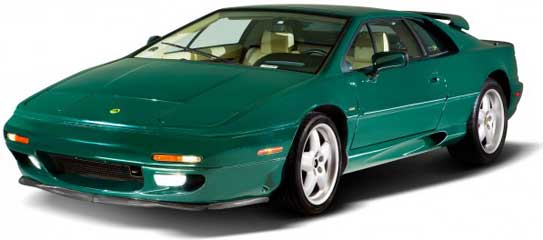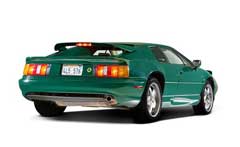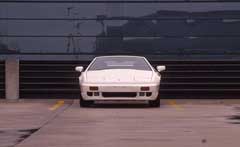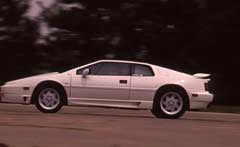

What You Need to Know
1989–96 Lotus Esprit Turbo Buyer’s Guide
October 10, 2013 at 2:20 pm by James Tate | Photography by Robert Kerian, Ken Hanna, and The Manufacturer
Making its debut as Giorgetto Giugiaro’s “Silver Car” concept in 1972, the production Esprit arrived in 1976 and lived on, and on, and on, until 2004. For nearly 30 years, this distinctive fiberglass wedge combined supercar looks and performance for far less than comparable Italian exotics. The same is true today, as many used Esprits can be acquired for less than the price of a new Toyota Camry. But do service and repair costs completely negate the value the Esprit offers to entry-level playboys now? Let’s have a look at the Esprit’s later, four-cylinder years, shall we?

ENGINE
The final four-cylinder Esprits used variants of Lotus’s 2.2-liter engine, tuned to produce 264 horsepower in the SE and S4 models and 300 horsepower in the S4S. Because of this engine’s high-stress life, regular oil changes are vital; new spark plugs are recommended with every oil change. A new timing belt every five years or 25,000 miles is also crucial. Err on the side of caution, as a broken timing belt is catastrophically expensive.TRANSMISSION
If the Esprit powertrain has an Achilles’ heel, it is its Renault-sourced five-speed transaxle. In a test of the S4S, we said it’s “like making a long-distance call to Paris to make a gearchange.” That was right before we lost second gear. That said, reliability and longevity depend largely on an Esprit’s first owner. Was he a clumsy gentleman racer? You’ll want to make sure any Esprit inspection involves a peek at the gearbox.


OTHER PROBLEM AREAS
The Esprit you’re looking at will most likely have an oil leak. The exhaust manifold and turbo handle a great deal of heat, so watch for loose bolts. The pump that circulates liquid through the intercooler has an impeller that was hardly intended to handle the heat of a turbocharged car. While the impeller can be replaced, the recommended repair is replacing the entire pump with a more reliable electric unit.
*Values provided by Black Book (BlackBookUSA.com).
ASK AN OWNER: JOHN WELCH (1990 AND ’91 LOTUS ESPRIT TURBO SES)C/D: Any unusual issues to look for?
JW: Never jump-start an Esprit. Ninety-nine percent of the time you’ll blow the alternator. Always use the coolant called for by the factory. The combo of aluminum engine components, brass radiator, steel fittings, etc., sets up a corrosion issue unless the proper coolant is used.C/D: What makes timing-belt repairs so pricey?
JW: It’s about $1250 to replace a timing belt, but if you break a belt, you’re screwed. Make a $6000 deposit with your garage when you buy the car. Typically a valve adjustment is done at the same time. To check the valve clearances is no problem; to adjust them is significant work. [Garages] typically pull the engine because it’s faster to pull the engine, do the work, and reinstall it.C/D: Where can a buyer learn more about Esprits?
JW: Lotus Esprit World (www.lotusespritworld.com) has a popular forum, but I prefer Lotus Talk (www.lotustalk.com). The Esprit Fact File (www.espritfactfile.com) has been around for years; the info on model-year-specific changes and issues is accurate.
|
|